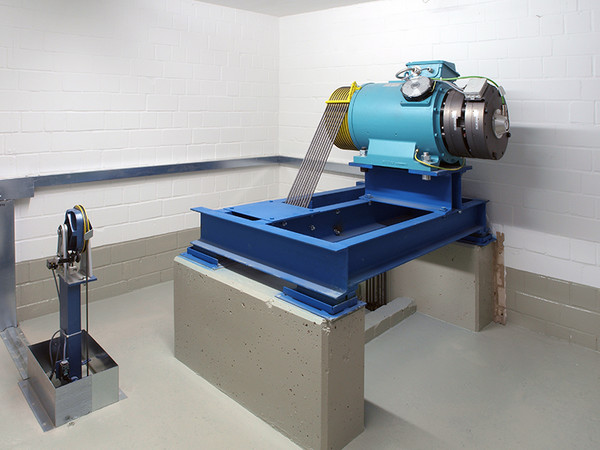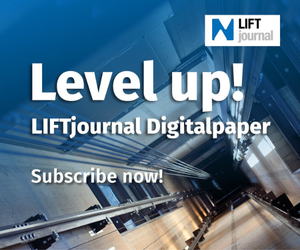Lift modernisation – but when and how?
When is the right time to modernise a lift? When does it make technical and economic sense? And what rules should be followed when doing so? This is what many operators – rightly – ask themselves.
A technical planner has compiled the most important facts.
There are about 765,000 lifts for the carriage of passengers and loads currently registered in Germany. In 2020, there were roughly 6.4 million existing lifts in 31 countries in Europe (including Turkey, Switzerland and the UK). The trend is upwards. In Germany, about 35 percent of them have an operating life of 30 years and more under their belts. This is probably similar to the rest of Europe. This refers both to rope lifts as well as hydraulically driven lifts in residential and business properties and public buildings.
Many operators often feel baffled in the face of old lifts that are technically and optically outdated. At the same time, they are aware that sustainable modernisation also boosts the value of a property. In addition, they have at least a glimmering that laws, standards and regulations are constantly changing in the field of conveyance technology.
Important factors in reaching a decision
Moreover, requirements for barrier-freedom, disabled accessibility, energy efficiency or digitalisation are likewise are being talked about more and more. However, subjects like operator obligations and liability risks for operating safety are also motivating many operators to become acquainted with modernisation.
Operators often then ask what the right time for modernising a lift is and when does it make technical and economic sense?
In general, the average service life of a lift is 25 - 30 years. But when should you modernise at the latest? The answer is multifaceted and individual.
These are the important factors in reaching a decision:
- Do many or cost-intensive defects exist according to the hazard assessment? Does the lift still reflect the state of the art?
- Do repeated or safety-related defects exist according to the authorised inspection body report?
- Are unplanned repairs increasing?
- Are malfunctions increasing?
- Are the repair and maintenance costs constantly increasing?
- Is the availability of spare parts restricted or already cancelled?
- Has the wear limit already been reached or exceeded?
- Is the use of the building / lift to change?
- Should the performance of the building / lift be upgraded?
- Are barrier-freedom / handicapped friendliness to be implemented?
If one or more of the above-mentioned points applies, investments in partial modernisation or a complete replacement make technical and business sense - due to the overall technical circumstances, they are sometimes even unavoidable.
No money for outdated technology
 Photo: © Hübschmann Aufzüge
Photo: © Hübschmann AufzügeIn the event of modernisation, main components such as the controller, drive, doors and/or lift car are completely replaced, depending on the scope. As a result, the lift then once again conforms to the current state of the art while operators receive several years guarantee on the newly installed components.
All building technology and lift-specific requirements are correspondingly taken into consideration in this respect. Certain components, such as guide rails or supporting frames of the car can even frequently be preserved, since apart from cleaning, nothing more needs to be done.
Consequently, investments are made in new components with a corresponding service life instead of continuing to put money into outdated technology.
Unencrypted components
To avoid the risk of any dependencies in the aftermath of maintenance and repairs, unencrypted components that are freely available on the market should be used. As a result, every company in the sector can then subsequently service the lift. This reinforces your negotiating position under the guarantee when it comes to contractual and price discussions.
Moreover, existing maintenance agreements can normally be correspondingly cancelled using a special right of cancellation.
Saving time, money and nerves
Anyone who is not a professional should think about getting support from an expert. This is because a modernisation project is extensive and should be professionally planned, prepared and carried out, both technically as well as economically. Advice from a neutral and independent expert or technical planner is worth it.
This is because he draws up a manufacturer-neutral, detailed call for tenders and obtains comparable offers on the market. This ensures an optimal cost-benefit relationship for the owner. Moreover, professional construction monitoring guarantees standard-compliant implementation and customer handover.
Synergetic effects and professional calls for tenders lower the costs both as investment as well as in subsequent lift operation. Incidentally: as a result, the operator also saves time and nerves ...
By Danny Zeisberg
The author runs the expert and technical planning office "Zeisberg LiftKonzepte" and offers advice and project support for lift operators.
Several questions need to be settled before modernisation: - Is a corresponding budget available?
- Will a replacement lift be available in the property during this period?
- Are there any people with restricted mobility and who need assistance?
- Can compensatory measures be taken (e.g. holiday, other routes, etc.)?
- What are the future requirements?
Useful knowledge: Due to the capacity utilisation of lift and component manufacturers, planning needs to make allowance for delivery times of 16 to 20 weeks after commissioning. Only then can work begin. After this, the operator must expect an additional two to four weeks for a partial modernisation and about eight weeks for a complete modernisation with many landings.
During the modernisation period, the lift will not be available, not even occasionally. Impediments will also occur because the company doing the work will need storage areas for new and old material. In addition, dirt and dust naturally occur during the modernisation and temporary noise pollution must be expected.
Important modernisation milestones: - Setting up the building site and installing the safety precautions
- Demounting and removing the old components
- Delivery of the new components
- Mounting and wiring of all components
- Settings and preparation for commissioning
- Acceptance by an authorised inspection body
- Commissioning of the lift
- Conduct of the acceptance and handover to the building owner
More information: zeisberg-liftkonzepte.de


























Write a comment